| Revision as of 05:42, 5 March 2010 view sourceVexorg (talk | contribs)Pending changes reviewers4,999 edits Undid revision 347855338 by Mbz1 (talk) restoring a POV edit← Previous edit | Revision as of 05:43, 5 March 2010 view source Vexorg (talk | contribs)Pending changes reviewers4,999 edits Undid revision 347855432 by Mbz1 (talk) Stop edit warring and pushing yor POV or I shall report youNext edit → | ||
| Line 82: | Line 82: | ||
| The C M de Rothschild & Figli bank arranged substantial loans to the Papal States and to various Kings of Naples plus the Duchy of Parma and the Grand Duchy of Tuscany. However, in the 1830s, Naples followed Spain with a gradual shift away from conventional bond issues that began to affect the bank's growth and profitability. The ] in 1861, with the ensuing decline of the Italian aristocracy who had been the Rothschild's primary clients, eventually brought about the closure of their Naples bank, due to declining profits, growth and their forecasts for long-term business sustainability.<br clear = all> | The C M de Rothschild & Figli bank arranged substantial loans to the Papal States and to various Kings of Naples plus the Duchy of Parma and the Grand Duchy of Tuscany. However, in the 1830s, Naples followed Spain with a gradual shift away from conventional bond issues that began to affect the bank's growth and profitability. The ] in 1861, with the ensuing decline of the Italian aristocracy who had been the Rothschild's primary clients, eventually brought about the closure of their Naples bank, due to declining profits, growth and their forecasts for long-term business sustainability.<br clear = all> | ||
| ==Connections to Israel== | |||
| ⚫ | Many Rothschilds were supporters of the ], although other members of the family opposed the creation of the state.<ref name="independent.co.uk"> By Paul Vallel, Friday, 16 April 2004</ref> Lord Victor Rothschild was against granting asylum or even help to Jewish refugees during the Holocaust.<ref name="independent.co.uk"/> However, Baron ] was a patron of the first settlement in ] at ], and bought from Ottoman landlords parts of the land which now makes up present-day Israel. In 1917 ] was the addressee of the ], which committed the British government to the establishment in Palestine of a national home for the Jewish people. | ||
| ==Zionism== | |||
| ⚫ | ] financed the ] building as a gift to the State of Israel. |
||
| ] | |||
| ⚫ | Many Rothschilds were and are supporters of the ], although other members of the family opposed the creation of the state.<ref name="independent.co.uk"> By Paul Vallel, Friday, 16 April 2004</ref> Lord Victor Rothschild was against granting asylum or even help to Jewish refugees during the Holocaust.<ref name="independent.co.uk"/> However, Baron ] was a patron of the first settlement in ] at ], and bought from Ottoman landlords many parts of the land which now makes up present-day Israel. In 1917 ] was the addressee of the ], which committed the British government to the establishment in Palestine of a national home for the Jewish people. | ||
| ⚫ | ] financed the ] building as a gift to the State of Israel. | ||
| The ] building was donated to Israel by ].<ref> (obituary), '']'', 13 December 1988. Accessed 19 June 2008.</ref> Outside the President's Chamber is displayed the letter Mrs Rothschild wrote to Prime Minister Shimon Peres expressing her intention to donate a new building for the Supreme Court.<ref>, Tour of Supreme Court, The Judicial Authority. .</ref> | The ] building was donated to Israel by ].<ref> (obituary), '']'', 13 December 1988. Accessed 19 June 2008.</ref> Outside the President's Chamber is displayed the letter Mrs Rothschild wrote to Prime Minister Shimon Peres expressing her intention to donate a new building for the Supreme Court.<ref>, Tour of Supreme Court, The Judicial Authority. .</ref> | ||
Revision as of 05:43, 5 March 2010
For the popular German surname "Rothschild", see Rothschild. For one of the investment banks founded by the family, see N M Rothschild & Sons. For one of the private banks founded by the family, see LCF Rothschild Group.| Rothschild Coat of Arms | |
|---|---|
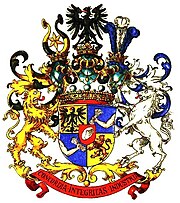 | |
| Current region | Monaco, Luxembourg, France, Switzerland, Liechtenstein, United Kingdom, Cayman Islands |
| Place of origin | Germany |


The Rothschild family (known as The House of Rothschild, or more simply as the Rothschilds) is a European dynasty of German Jewish origin that established European banking and finance houses from the late 1700s. Five brothers of the Austrian branch of the family were given hereditary baronies of the Habsburg Empire by Emperor Francis II in 1816. The British branch of the family was elevated into the nobility by Queen Victoria. During the 19th century, the family possessed by far the largest private fortune in the world, and by far the largest fortune in modern history. Although family financial records have not been preserved, at its height in the mid-19th century, the total family worth spread across Europe would have been, in today's terms, at the lowest estimates in the many hundreds of billions ($US), if not in the trillions.
Origins
The family's rise to European prominence began with Mayer Amschel Rothschild (born Frankfurt, 1744), the son of Amschel Moses Rothschild, a money changer. Born in the ghetto (called "Judengasse" or Jew Alley) of Frankfurt am Main, he developed a finance house and spread his empire by installing each of his five sons in European cities to conduct business. An essential part of Mayer Rothschild's strategy for future success was to keep control of their businesses in family hands, allowing them to maintain full discretion about the size of their wealth and their business achievements. Following a technique used by the aristocracy, (which was also later copied by business dynasties such as the Du Pont family), Mayer Rothschild successfully kept the fortune in the family with carefully arranged marriages, including between first or second cousins, although by the later 19th century, almost all Rothschilds had started to marry outside the family, usually into the aristocracy or other financial dynasties. His sons were:
- Amschel Mayer Rothschild (1773–1855): Frankfurt
- Salomon Mayer Rothschild (1774–1855): Vienna
- Nathan Mayer Rothschild (1777–1836): London
- Calmann Mayer Rothschild (1788–1855): Naples
- Jakob Mayer Rothschild (1792–1868): Paris
The Rothschild coat of arms contains a clenched fist with five arrows symbolizing the five sons of Mayer Rothschild, a reference to Psalm 127: "Like arrows in the hands of a warrior". The family motto appears below the shield, in Latin, Concordia, Integritas, Industria, (Harmony, Integrity, Industry). The German family name means "Red Shield".
Families by country:
- Rothschild banking family of Naples
- Rothschild banking family of England
- Rothschild banking family of Austria
- Rothschild banking family of Germany
- Rothschild banking family of France
- Rothschild banking family of Switzerland
The Napoleonic Wars
The Rothschilds already possessed a very significant fortune before the start of Napoleonic Wars. From 1813 to 1815, Nathan Mayer Rothschild in London was instrumental in the financing of the British war effort, financing the shipment of bullion to the Duke of Wellington's army in Portugal and Spain, as well as arranging the payment of British financial subsidies to their Continental allies. In 1815 alone, the Rothschilds provided £9.8 million (in 1815 currency prices) in subsidy loans to Britain's continental allies.
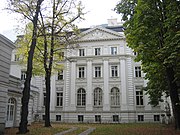
According to popular legend, the four brothers helped co-ordinate activities across the continent, and the family supposedly developed a network of agents, shippers and couriers to transport gold and information across Europe. According to this legend, the alleged private intelligence service enabled Nathan to receive in London the news of Wellington's victory at the Battle of Waterloo a full day ahead of the government's official messengers. Research has shown that this is, rather, a myth that originated in an partisan French pamphlet in 1846, was embellished by John Reeves in 1887 in The Rothschilds: the Financial Rulers of Nations and then repeated in other later popular accounts, such as that of Morton. The basis for the Rothschild's most famously profitable move was made after the news of British victory had been made public. Nathan Rothschild calculated that the future reduction in government borrowing brought about by the peace would create a bounce in British government bonds after a two year stabilisation, which would finalise the post-war re-structuring of the domestic economy. In what has been described as one of the most audacious moves in financial history, Nathan immediately bought up the entire government bond market, for what at the time seemed an excessively high price, before waiting two years, then selling the bonds on the crest of short bounce in the market in 1817 for a 40% profit. Given the sheer power of leverage the Rothschild family had at its disposal, this profit was an enormous sum.
Nathan Mayer Rothschild started his London business, N. M. Rothschild and Sons in 1811 at New Court in St Swithin's Lane, City of London, where it trades today. In 1818, he arranged a £5 million loan to the Prussian government, and the issuing of bonds for government loans formed a mainstay of his bank’s business. He gained a position of such power in the City of London that by 1825–6 he was able to supply enough coin to the Bank of England to enable it to avert a market liquidity crisis. The historian Niall Ferguson wrote: "As we have seen, however, wars tended to hit the price of existing bonds by increasing the risk that a debtor state would fail to meet its interest payments in the event of defeat and losses of territory. By the middle of the 19th century, the Rothschilds had evolved from traders into fund managers, carefully tending to their own vast portfolio of government bonds. Now having made their money, they stood to lose more than they gained from conflict. The Rothschilds had decided the outcome of the Napoleonic Wars by putting their financial weight behind Britain. Now they would... sit on the sidelines."
International High Finance
| "I have not the nerve for his operations. They are well-planned, with great cleverness and adroitness in execution - but he is in money and funds what Napoleon was in war." - Baron Baring on Nathan Rothschild |

In 1816, four of the brothers were each elevated to the hereditary nobility by Austrian Emperor Francis I; Nathan was elevated in 1818. All of them were granted the Austrian title of baron or Freiherr on 29 September 1822. As such, some members of the family used "de" or "von" Rothschild to acknowledge the grant of nobility. In 1885, Nathan Mayer Rothschild II (1840–1915) of the London branch of the family, was granted the hereditary peerage title Baron Rothschild in the Peerage of the United Kingdom.
Rothschild family banking businesses pioneered international high finance during the industrialisation of Europe and were instrumental in supporting railway systems across the world and in complex government financing for projects such as the Suez Canal. The family bought up a large proportion of the property in Mayfair, London. Major businesses directly founded by Rothschild family capital include Alliance Assurance (1824) (now Royal & SunAlliance); Chemin de Fer du Nord (1845); Rio Tinto Group (1873); Société Le Nickel (1880) (now Eramet); and Imétal (1962) (now Imerys). The Rothschilds financed the founding of De Beers, as well as Cecil Rhodes on his expeditions in Africa and the creation of the colony of Rhodesia. From the late 1880s onwards, the family controlled the Rio Tinto mining company.
The Japanese government approached the London and Paris families for funding during the Russo-Japanese War. The London consortium's issue of Japanese war bonds would total £11.5 billion (at 1907 currency rates).
After amassing huge fortunes, the name Rothschild became synonymous with extravagance and great wealth, and the family was renowned for its art collecting, for its palaces, as well as for its philanthropy. By the end of the century, the family owned, or had built, at the lowest estimates, over 41 palaces, of a scale and luxury perhaps unparalleled even by the richest Royal families. The British Prime Minister Lloyd George claimed, in 1909, that Lord Nathan Rothschild was the most powerful man in Britain.
In 1901, with no male heir to take it on, the Frankfurt House closed its doors after more than a century in business. It was not until 1989 that they returned when N M Rothschild & Sons, the British investment arm, plus Bank Rothschild AG, the Swiss branch, set up a representative banking office in Frankfurt.
French branches
Main article: Rothschild banking family of France
There are two branches of the family connected to France. The first was son James Mayer de Rothschild (1792–1868), known as "James", who established de Rothschild Frères in Paris. Following the Napoleonic Wars, he played a major role in financing the construction of railroads and the mining business that helped make France an industrial power. James' sons Gustave de Rothschild and Alphonse James de Rothschild continued the banking tradition and were responsible for raising the money to pay the compensation demanded by the occupying Prussian army in the 1870s Franco-Prussian War. Ensuing generations of the Paris Rothschild family remained involved in the family business, becoming a major force in international investment banking. The Rothschilds have since led the Thomson Financial League Tables in Investment Banking Merger and Acquisition deals in the UK, France and Italy.
James Mayer de Rothschild's other son, Edmond James de Rothschild (1845–1934) was a strong supporter of Zionism. His grandson, Baron Edmond Adolphe de Rothschild, founded in 1953 the LCF Rothschild Group, a private bank. Since 1997, Baron Benjamin de Rothschild chairs the group. The group has €100bn of assets in 2008 and owns many wine properties in France (Château Clarke, Château des Laurets), in Australia or in South Africa.
In 1961, the 35 year old Baron Edmond purchased the company Club Med, after he had visited a resort and enjoyed his stay. His interest in Club Med was sold off by the 1990s. In 1973, he bought out the Bank of California, selling his interests in 1984 before it was sold to Mitsubishi Bank in 1985
The second French branch was founded by Nathaniel de Rothschild (1812–1870). Born in London he was the fourth child of the founder of the British branch of the family, Nathan Mayer Rothschild (1777–1836). In 1850, Nathaniel Rothschild moved to Paris, ostensibly to work with his uncle, James Mayer Rothschild. However, in 1853 Nathaniel acquired Château Brane Mouton, a vineyard in Pauillac in the Gironde département. Nathaniel Rothschild renamed the estate, Château Mouton Rothschild and it would become one of the best known labels in the world. In 1868, Nathaniel's uncle, James Mayer de Rothschild acquired the neighboring Chateau Lafite vineyard. By 1980, Guy de Rothschild's business had an annual turnover of 26 billion francs (in the currency rates of 1980). But then the Paris business suffered a near death blow in 1982 when the Socialist government of François Mitterrand nationalized and renamed it Compagnie Européenne de Banque. Baron David de Rothschild, then 39, decided to stay and rebuild, creating a new entity Rothschild & Cie Banque with just three employees and $1 million in capital. Today, the Paris operation has 22 partners and accounts for a significant part of the global business.
Austrian branch

In Vienna, Salomon Mayer Rothschild established a bank in the 1820s and the family became admired and respected citizens. The Austrian Rothschilds were elevated to nobility by the Austrian emperor for their services. The crash of 1929 brought problems, and Baron Louis von Rothschild attempted to shore up the Creditanstalt, Austria's largest bank, to prevent its collapse. Nevertheless, during World War II they had to surrender their bank to the Nazis and flee the country. Their Rothschild palaces, a collection of vast palaces in Vienna built and owned by the family, were confiscated, plundered and destroyed by the Nazis. The palaces were famous for their sheer size, and for their huge collections of paintings, armour, tapestries, statues (some of which were restituted to the Rothschilds by the Austrian government in 1999). All family members successively escaped the Holocaust, some of them moving to the United States, and only returning to Europe after the war. In 1999, the government of Austria agreed to return to the Rothschild family some 250 art treasures looted by the Nazis and absorbed into state museums after the war.
Naples branch
The C M de Rothschild & Figli bank arranged substantial loans to the Papal States and to various Kings of Naples plus the Duchy of Parma and the Grand Duchy of Tuscany. However, in the 1830s, Naples followed Spain with a gradual shift away from conventional bond issues that began to affect the bank's growth and profitability. The Unification of Italy in 1861, with the ensuing decline of the Italian aristocracy who had been the Rothschild's primary clients, eventually brought about the closure of their Naples bank, due to declining profits, growth and their forecasts for long-term business sustainability.
Zionism

Many Rothschilds were and are supporters of the State of Israel, although other members of the family opposed the creation of the state. Lord Victor Rothschild was against granting asylum or even help to Jewish refugees during the Holocaust. However, Baron Edmond James de Rothschild was a patron of the first settlement in Palestine at Rishon-LeZion, and bought from Ottoman landlords many parts of the land which now makes up present-day Israel. In 1917 Walter Rothschild, 2nd Baron Rothschild was the addressee of the Balfour Declaration, which committed the British government to the establishment in Palestine of a national home for the Jewish people.
James A. de Rothschild financed the Knesset building as a gift to the State of Israel.
The Supreme Court of Israel building was donated to Israel by Dorothy de Rothschild. Outside the President's Chamber is displayed the letter Mrs Rothschild wrote to Prime Minister Shimon Peres expressing her intention to donate a new building for the Supreme Court.
Modern business
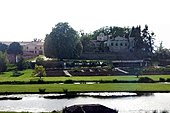
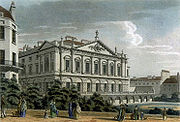
Since the end of the 19th century, the family has taken a low-key public profile, donating many of their most famous estates, as well as vast quantities of art, to charity, keeping full anonymity about the size of their fortunes, and eschewing conspicuous displays of wealth. The family once had perhaps the largest private art collections in world history, and a significant proportion of the art in the world's public museums are Rothschild donations which were sometimes, in the family tradition of discretion, donated anonymously.
In July 2003, a major reorganization of the Rothschild business structure took place when the two main London and Paris investment banks were united through a new Dutch-registered master holding company, Concordia BV, under the chairmanship of Baron David René de Rothschild. Under this banner, Rothschild et Cie Banque controls the Rothschild banking businesses in France and continental Europe, while Rothschilds Continuation Holdings AG controls the Rothschild banking elsewhere, including N M Rothschild & Sons in London. Twenty percent of Rothschild Continuation Holdings AG was sold in 2005 to Jardine Strategic, which is a subsidiary of Jardine, Matheson & Co. of Hong Kong. In November 2008, Rabobank Group, the leading investment and commmercial bank in the Netherlands, acquired 7.5% of Rothschild Continuation Holdings AG, and Rabobank and Rothschild entered into a co-operation agreement in the fields of Mergers and Acquisitions (M&A) advisory and Equity Capital Markets advisory in the food and agribusiness sectors. It was believed that the move was intended to help Rothschild Continuation Holdings AG gain access to a wider capital pool, enlarging its presence in East Asian markets.
A London investment bank, N M Rothschild & Sons does most of its business as a mergers and acquisitions advisor. In 2006, it ranked second in UK M&A with deals totalling $104.9 billion. In 2006, it publicly recorded a pre-tax annual profit of £83.2 million with assets of £5.5 billion.
One member of the French branch of the family, Edmond Adolphe de Rothschild (1926–1997) founded the LCF Rothschild Group, based in Geneva, with €100 billion in assets, which today extends to 15 countries across the world. Although this Group is primarily a financial entity, specialising in asset management and private banking, its activities also cover mixed farming, luxury hotels, and yacht racing. The LCF Rothschild Group's committee is currently being chaired by Benjamin de Rothschild, Baron Edmond's son, who is also said to have personal savings in the multiple billions in 2008.
Rothschild family banks include, amongst others, Compagnie Financière Edmond de Rothschild and Banque privée Edmond de Rothschild, La Compagnie Benjamin de Rothschild S.A., and COGIFRANCE.
To this day, the family maintains a close relationship with the Rio Tinto mining corporation. The Rothschild family also owns many wine estates: their estates in France include Château Clarke, Château de Ferrières, Château des Fontaines, Château Lafite, Château de Laversine, Château des Laurets, Château Malmaison, Château de Montvillargenne, Château Mouton Rothschild, Château de la Muette, Château Rothschild d'Armainvilliers, Château Rothschild, Boulogne-Billancourt. They also own wine estates across North America, South America, South Africa and Australia.
In 1980, Jacob Rothschild, 4th Baron Rothschild resigned from N M Rothschild & Sons and took independent control of Rothschild Investment Trust (now RIT Capital Partners, one of the UK's largest investment trusts.) He went on to found J. Rothschild Assurance Group (now St James's Place Capital) with Sir Mark Weinberg in 1991. In December 2009, Jacob Rothschild, said to have personal savings in the multiple-billions, invested $200 million of his own money in a North Sea Oil company. He also currently chairs another Rothschild family investment trust, RIT Capital Partners, which has reported assets of $3.4 billion in 2008. In January 2010, Nathaniel Philip Rothschild bought a substantial share of the Glencore mining and oil company's market capitalization. He is also buying a large share of the aluminium mining company United Company RUSAL.
Popular culture references


The story of the Rothschild family has been featured in a number of films. The 1934 Hollywood film titled The House of Rothschild, starring George Arliss and Loretta Young, recounted the life of Mayer Amschel Rothschild. Excerpts from this film were incorporated into the National Socialist (Nazi) propaganda film Der ewige Jude (The Eternal Jew) and another German film Die Rothschilds (also called Aktien auf Waterloo) was directed by Erich Waschneck in 1940. A Broadway musical entitled The Rothschilds, covering the history of the family up to 1818, was nominated for a Tony Award in 1971.
In France, the word "Rothschild" was throughout the 19th and 20th centuries a synonym for seemingly endless wealth, neo-Gothic styles, Byzantine splendour, grand manners and epicurean glamour. The family also has lent its name to "le goût Rothschild," a suffocatingly glamorous style of living whose decorative elements include neo-Renaissance palaces, extravagant use of velvet and gilding, vast collections of armour and sculpture, a sense of Victorian horror vacui, and the highest masterworks of art. Le goût Rothschild has much influenced interior designers such as Robert Denning, Vincent Fourcade, and others. In the words of the Daily Telegraph: "The multinational banking family is a byword for wealth, power – and discretion... the Rothschild name has become synonymous with money and power to a degree that no other family has ever matched."
The name Rothschild used as a synonym for extreme wealth inspired the song If I Were a Rich Man (song), which is based on a song from the Tevye the Dairyman stories, written in the Yiddish as Ven ikh bin Rotshild, meaning "If I were a Rothschild".
The German surnames "Rothschild" and "Rothchild" are not related to the Protestant surname "Rothchilds" from the United Kingdom.
Conspiracy theories
Over two centuries, the Rothschild family has frequently been the target of conspiracy theories. These theories take differing forms, such as claiming that the family belongs to the Illuminati, or controls the world's wealth and financial systems and institutions. The theories have taken differing forms, and been propagated for different reasons, most famously by the Nazi Party, who used a variant in anti-semitic propaganda, alleging that the Rothschild family encouraged wars between governments. Discussing this and similar conspiracy theories, the historian Niall Ferguson wrote: "As we have seen, however, wars tended to hit the price of existing bonds by increasing the risk that a debtor state would fail to meet its interest payments in the event of defeat and losses of territory. By the middle of the 19th century, the Rothschilds had evolved from traders into fund managers, carefully tending to their own vast portfolio of government bonds. Now having made their money, they stood to lose more than they gained from conflict. The Rothschilds had decided the outcome of the Napoleonic Wars by putting their financial weight behind Britain. Now they would.. sit on the sidelines."
Prominent descendants of Mayer Amschel Rothschild
This is a dynamic list and may never be able to satisfy particular standards for completeness. You can help by adding missing items with reliable sources.Prominent lineal descendants of Mayer Amschel Rothschild include amongst many others:
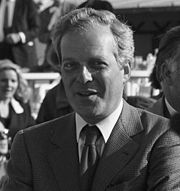




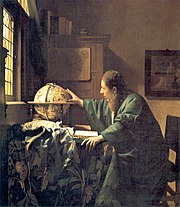
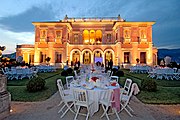
- Princess Agnès de La Tour d'Auvergne-Lauraguais, (born 1972)
- Prince Alexandre Louis Philippe Marie Berthier, (1883–1918), died fighting in WW1
- Albert Salomon von Rothschild (1844–1911), the once majority shareholder of Creditanstalt
- Alfred Charles de Rothschild (20 July 1842 - 31 January 1918)
- Alice Charlotte von Rothschild (1847–1922) close friend of Queen Victoria
- Aline Caroline de Rothschild (1885–1909), French socialite
- Lady Aline Caroline Cholmondeley (1916-)
- Baroness Alix Hermine Jeannette Schey de Koromla (1911–1982)
- Alphonse James de Rothschild (1827–1905)
- Amschel Mayor James Rothschild (1955–1996, Paris), patron of motor racing
- Princess Andréa de La Tour d'Auvergne-Lauraguais (born Paris 1972)
- Anthony Gustav de Rothschild(1887–1961), horse-breeder
- Anthony James de Rothschild (born 1977)
- Anselm von Rothschild (1803–1874), Austrian banker
- Anselm Alexander Carl de Rothschild (1835–1854)
- Sir Anthony de Rothschild, 1st Baronet (1810–1876)
- Antoine Armand Odélric Marie Henri de Gramont, 13th Duke of Gramont, (1951-)
- Alain James de Rothschild (1910–1982)
- Count Armand de Cossé-Brissac (1967-)
- Miriam Caroline Alexandrine de Rothschild
- Lord Charles Robert Archibald Grant
- Ariane de Rothschild
- Ariella de Rothschild
- Arthur de Rothschild (1851–1903)
- Benjamin de Rothschild(born 1963, Paris)
- Princess Béatrice de Broglie (born 1913)
- Béatrice Ephrussi de Rothschild (1864–1934)
- Bethsabée de Rothschild (1914–1999)
- Carl Mayer von Rothschild (1788–1855)
- Cécile Léonie Eugénie Gudule Lucie de Rothschild (1913-)
- Charlotte de Rothschild
- Charlotte Henriette de Rothschild(born 1955), British opera singer
- Charlotte von Rothschild(1818–84)
- Count Charles-Emmanuel Lannes de Montebello (born 1942)
- Charles Rothschild (1877–1923), banker and entomologist
- Constance Flower, 1st Baroness of Battersea, (1843–1931)
- David Cholmondeley, 7th Marquess of Cholmondeley (1960-), Lord Great Chamberlain of England
- David Lionel de Rothschild (b. 1955), British horticulturist
- David Mayer de Rothschild (b. 1978), billionaire British adventurer and environmentalist
- David René de Rothschild (born 1942)
- Diane Cécile Alice Juliette de Rothschild (1907-)
- Dorothy de Rothschild (1895–1988), on her death she left the largest probated estate in Britain
- Edmond Adolphe de Rothschild
- Edouard Etienne de Rothschild, (born 1957)
- Édouard Alphonse James de Rothschild (1868–1949) financier and polo player
- Prince Edouard de La Tour d'Auvergne-Lauraguais, (1949-)
- Edmond James de Rothschild (1845–1934)
- Edmund Leopold de Rothschild (1916–2009)
- Elie de Rothschild (1917–2007)
- Princess Elisabeth de Broglie (1920-)
- Emma Rothschild (born 1948)
- Lady Emily Magda Rothschild (1967-)
- Evelina de Rothschild(1839–66)
- Evelyn Achille de Rothschild(1886–1917), died fighting for the British army in WW1
- Sir Evelyn de Rothschild (born 1931), banker
- Guy de Rothschild (1909–2007)
- Baron Ferdinand de Rothschild (1839–1898)
- Hannah Rothschild, writer
- Hannah Primrose, Countess of Rosebery née Hannah Rothschild (1851–1890)
- Henry Herbert, 7th Earl of Carnarvon, (1924–2001)
- Henri James de Rothschild (1872–1946)
- Henry Herbert, 6th Earl of Carnarvon (1898–1987
- Duke Hélie Marie Auguste Jacques Bertrand Philippe, (1943), 10th Duke of Noailles
- Henriette Rothschild (1791–1866) married Sir Moses Montefiore (1784–1885)
- Count Henri de Gramont (1909–1994)
- Count Henry de Worms, (1840–1903)
- Hugh Cholmondeley, 6th Marquess of Cholmondeley (1919–90), Lord Great Chamberlain of England
- Jacob Rothschild, 4th Baron Rothschild, (born 1936), investment banker
- James Armand de Rothschild (1878–1957)
- James Mayer Rothschild (1792–1868)
- Lord John George Cholmondeley (–1986)
- Prince Jean-Michel de La Tour d'Auvergne-Lauraguais, (1973-)
- Jessica Rothschild (1974-), a writer for Tatler magazine
- Baroness Lavinia Anne Alix de Rothschild
- Marie-Hélène de Rothschild (1927–94), French socialite
- Mayer Amschel de Rothschild (1818–1874)
- Neil Primrose, 7th Earl of Rosebery (1929-)
- Captain Neil Primrose (1882–1917), MP, killed fighting in WW1
- Baroness Nica de Koenigswarter (née Baroness Pannonica Rothschild) (1913–1988), patron of bebop and jazz writer
- Baron Léon Lambert(1929–87), Belgium art collector
- Leopold de Rothschild (1845–1917)
- Leopold David de Rothschild (1927-)
- Leonora de Rothschild (1837–1911)
- Lionel Nathan Rothschild (1808–1879)
- Louis Nathaniel de Rothschild(1882–1955)
- Countess Magdalene-Sophie von Attems, (1927-)
- Miriam Louisa Rothschild (1908–2005), famous entomologist and zoologist
- Lionel Walter Rothschild, 2nd Baron Rothschild of the United Kingdom (1868–1937)
- Nathaniel de Rothschild (1812–1870)
- Nathan Mayer Rothschild (1777–1836)
- Nathan Mayer Rothschild, 1st Baron Rothschild of the United Kingdom (1840–1915)
- Nathaniel Charles Jacob Rothschild, 4th Baron Rothschild of the United Kingdom (born 1936)
- Nathaniel Robert de Rothschild (1946), French financier
- Nathaniel Mayer Victor Rothschild, 3rd Baron Rothschild of the United Kingdom (1910–1990)
- Nathaniel Philip Rothschild (born 1971), a co-chairman of Atticus Capital, a £20 billion hedge fund
- Nathaniel Anselm von Rothschild(1836–1905), Austrian socialite
- Sir Philip Sassoon, 3rd Baronet(1888–1939), British First Commissioner of Works and Under-Secretary of State for Air
- Count Philippe de Nicolay, (born 1955)
- Philippe de Rothschild (1902–1988), vintner
- Philippine de Rothschild (born 1935), vintner
- Jacqueline Rebecca Louise de Rothschild, born November 6, 1911, chess and tennis champion
- Harry Primrose, 6th Earl of Rosebery(1882–1974) Earl of Roseberry
- Salomon James de Rothschild, (1835–1864)
- Lady Serena Dunn Rothschild, (born 1935)
- Countess Sophie von Löwenstein-Scharffeneck, (1896–1978)
- Lady Sybil Grant (1879–1955), British writer
- Sybil Rachel Betty Cecile Sassoon, Marchioness of Cholmondeley, (1894–1989)
- Thomas William Rothschild
- Valentine Noémi von Springer, (1886, d. 1969)
- Victor Rothschild, 3rd Baron Rothschild
- Victoria Katherine Rothschild (1953-)
- Richard W. Bauer
- Walter Rothschild, 2nd Baron Rothschild, zoologist
- Wilhelm Carl von Rothschild
Prominent marriages into the family include, amongst many others:
This is a dynamic list and may never be able to satisfy particular standards for completeness. You can help by adding missing items with reliable sources.- Maurice Ephrussi (1849–1916), of the Ephrussi banking dynasty
- Ben Goldsmith (1980-), son of financier James Goldsmith
- Anita Patience Guinness (1957), of the Guinness family, married Amschel Mayor James Rothschild
- Cora Guggenheim (1873–1956), of the Guggenheim family, married Louis F. Rothschild (1869–1957)
- Abraham Oppenheim (1804–1878), of the Oppenheim Family, married Charlotte Beyfus (1811–1887)
- Elisabeth de Rothschild (1902–1945), (born Baroness Pelletier de Chambure), the only member of the Rothschild family to die in the holocaust.
- George Cholmondeley, 5th Marquess of Cholmondeley,(1883–1968), of the Walpole family
- Antoine Alfred Agénor, 11th Duc de Gramont, (1851–1921)
- Pauline de Rothschild (1908–1976), fashion designer and translator of Elizabethan poetry
- Lady Irma Pauahi Wodehouse (1897), of the Wodehouse family
- Prince Louis Philippe Berthier, (1836–1911)
- Jeanne de Rothschild (1908–2003), actress
- Liliane de Rothschild (1916–2003) art collector
- Princess Olimpia Anna Aldobrandini, of the House of Borghese and the House of Bonaparte
- Richard Francis Roger Yarde-Buller, 4th Baron Churston of Churston Ferrers and Lupton, (1910–1991), married Olga Alice Muriel Rothschild
- Serena Dunn Rothschild (b. 1935), grand-daughter of Sir James Hamet Dunn, 1st Baronet
- Marlene de Rothschild (born 1943) art collector
- Maria Beatrice de Rothschild, grand-daughter of the Princess de Marsiconovo
- Lynn Forester de Rothschild (born 1954), business woman
- Carola Warburg Rothschild (1894–1987), philanthropist, born into the Warburg family
- Edward Maurice Stonor (1885–1930), son of Francis Stonor, 4th Baron Camoys
- Lady Pamela Wellesley Grant, (born 1912), great-grand-daughter of the The Duke of Wellington
- Baroness Rozsika Edle von Wertheimstein
- Count Etienne van Zuylen van Nijevelt of the House of Van Zuylen van Nijevelt (married Baroness Hélène de Rothschild (1863–1947)).
See also
- De Beers
- Rio Tinto Mining Group
- Avenue Foch
- Hôtel Salomon de Rothschild
- Bethmanns and Rothschilds
- Vaux-de-Cernay Abbey
- Château Lafite-Rothschild
- Château Mouton Rothschild
- Palais Rothschild
- Rothschild (Fabergé egg)
- Rothschild properties in Buckinghamshire
- Hotel Lambert
- Cecil John Rhodes
- Rockefeller family
- Old Money
- Ascott House
Notes
- The House of Rothschild: Money's prophets, 1798-1848, Volume 1, Niall Ferguson, 1999
- The House of Rothschild: Money's prophets, 1798-1848, Volume 1, Niall Ferguson, 1999, introduction
- Frederic Morton, The Rothschilds: Portrait of a Dynasty, 1962. ISBN 1-56836-220-X, page 57
- ^ The House of Rothschild: Money's prophets, 1798-1848, Volume 1, Niall Ferguson, 1999, page 481-85
- Pohl, Manfred (2005), "Rothschild, Meyer Amschel", Neue Deutsche Biographie (in German), vol. 22, Berlin: Duncker & Humblot, pp. 131–133
- ^ Go Ahead, Kiss Your Cousin by Richard Conniff, From the August 2003 issue, published online August 1, 2003
- Concordia, Integritas, Industria - The Rothschilds - LCF Rothschild Group
- ^ The Ascent of Money: A Financial History of the World, (London 2008), page 78.
- Victor Gray and Melanie Aspey, "Rothschild, Nathan Mayer (1777–1836)", Oxford Dictionary of National Biography, Oxford University Press, September 2004; online edition, May 2006. Accessed 21 May 2007.
- ^ Victor Rothschild - "The Shadow of a Great Man" in Random Variables, Collins, 1984.
- ^ *Ferguson, Niall. The World's Banker: The History of the House of Rothschild. Weidenfeld & Nicolson, 1998, ISBN 0-297-81539-3
- The Ascent of Money: A Financial History of the World, (London 2008), page 91.
- Philip Ziegler, The Sixth Great Power: Barings, 1726-1929, (London 1988), pp.94f
- Richard Smethurst, "Takahasi Korekiyo, the Rothschilds and the Russo-Japanese War, 1904-1907", accessed 4 September 2007
- A History of the Jews, Paul Johnson (London 2004), page 319-20
- Faith, Nicholas (4 November 1997). "Obituary: Baron Edmond de Rothschild". The Independent. Retrieved 2009-03-29.
- Gilbert Trigano, a Developer of Club Med, Is Dead at 80 By JOHN TAGLIABUE Published: February 6, 2001
- RPT-French banker Guy de Rothschild dies aged 98Reuters, Thu Jun 14, 2007 12:26pm EDT
- ^ The Rothschild story: A golden era ends for a secretive dynasty By Paul Vallel, Friday, 16 April 2004
- "Dorothy de Rothschild, 93, Supporter of Israel" (obituary), The New York Times, 13 December 1988. Accessed 19 June 2008.
- The Presidents Chamber, Tour of Supreme Court, The Judicial Authority. http://elyon1.court.gov.il/eng/home/index.html.
- The Rothschilds: Portrait of a Dynasty, By Frederic Morton, page 11
- The Rothschilds: Portrait of a Dynasty, By Frederic Morton, page 11-13
- Paris-Orléans
- See: http://www.rabobank.com/content/news/news_archive/020-RothschildandRabobankestablishglobalfoodandagricooperation.jsp
- "Rothschild sells 7.5% stake to Rabobank". FT Alphaville. 2008. Retrieved 2008-11-20.
- League tables
- Annual Report of N M Rothschild & Sons Limited for the year ended 31 March 2006.
- http://www.challenges.fr/classements/fortune.php?cible=527
- St. James's Place Capital, plc | International Directory of Company Histories | Find Articles at BNET.com
- Rothschild backs North Sea oil trio From The Sunday Times December 6, 2009
- RIT Capital Partners
- Bloomberg Businessweek, Glencore May Expand to Rival BHP, Rothschild Says January 06, 2010, Simon Casey
- The Rothschilds: Portrait of a Dynasty, By Frederic Morton (1998), page 5
- Daily Telegraph,The Rothschilds: They prefer to let their money do the talking, William Langley, Published: 9:59PM BST 25 Oct 2008
- The Rough Guide to Conspiracy Theories, James McConnachie, Robin Tudge Edition: 2 - 2008
- Levy, Richard S. (2005). Antisemitism: A Historical Encyclopedia of Prejudice. ABC-CLIO. p. 624. ISBN 1851094393.
- Poliakov, Leon (2003). The History of Anti-semitism: From Voltaire to Wagner. University of Pennsylvania Press. p. 343. ISBN 0812218655.
- Makow Ph.D, H: Illuminati: The Cult that Hijacked the World, BookSurge Publishing, 2008, ISBN 1439211485
- Brustein, William (2003). Roots of hate. Cambridge University Press. p. 147. ISBN 0521774780.
- Perry, Marvin (2002). Antisemitism: Myth and Hate from Antiquity to the Present. Palgrave Macmillan. p. 117. ISBN 0312165617.
- The Ascent of Money: A Financial History of the World, (London 2008), page 91.
- Eco-warrior sets sail to save oceans from 'plastic death'The Observer, Sunday 12 April 2009, Robin McKie
- The Rothschilds and their 200 years of political influence By Andy McSmith, Thursday, 23 October 2008, The Independent
- ^ 1. Charles Mosley, editor, Burke's Peerage, Baronetage & Knightage, 107th edition, 3 volumes (Wilmington, Delaware, U.S.A.: Burke's Peerage (Genealogical Books) Ltd, 2003), volume 3, page 3416. Hereinafter cited as Burke's Peerage and Baronetage, 107th edition.
- Carola W. Rothschild, Ex-Girl Scout OfficialNY Times, Published: Tuesday, September 1, 1987
Further reading
- Niall Ferguson: The House of Rothschild: Money's Prophets, 1798–1848 (ISBN 0-14-024084-5)
- Niall Ferguson: The House of Rothschild: The World's Banker, 1849–1998 (ISBN 0-14-028662-4)
- Frederic Morton: The Rothschilds: Portrait of a Dynasty (ISBN 1-56836-220-X)
- Amos Elon: Founder: A Portrait of the First Rothschild and His Time, 1996. (ISBN 0-670-86857-4)
- Egon Caesar Conte Corti: Rise of the House of Rothschild, B. Lunn (translator), Books for Business 2001 (reprint of 1928 translation published by Gollancz), ISBN 978-0894990588, Amazon.co.uk searchable online view
- Joseph Valynseele & Henri-Claude Mars, Le Sang des Rothschild, L’Intermédiaire des Chercheurs et Curieux, Paris, 2004 (ISBN 2-908003-22-8)
- Derek A. Wilson: Rothschild: A Story of Wealth and Power (ISBN 023398870X)
Documentary film
- Ascent of Money: A Financial History of the World - The early history of the Rothschild's family business feature in the second of a four part series by Niall Ferguson, aired on Channel Four
External links
- Official website of the late Baron Philippe de Rothschild
- Family website
- Chateau de Ferrieres Official website
- N. M. Rothschild and Sons
- LCF Rothschild Group
- Rothschild Archive
- Chateau Lafite Rothschild
- Chateau Mouton Rothschild
- Compagnie vinicole Baron Edmond de Rothschild
- Yahoo! - NM Rothschild & Sons Limited Company Profile
- Independent - The Rothschild story: A golden era ends for a secretive dynasty
- Niall Ferguson: The House of Rothschild, vol. 1. Table of contents and beginning of first chapter.